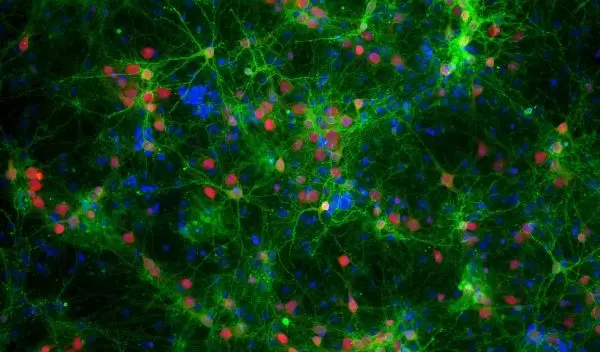
Video series: New strategies address one of science's greatest mysteries
Your brain is the boss of you.
It controls vital physiological functions--such as breathing--as well as thoughts, memories and learning. Yet our understanding of the brain is downright rudimentary compared to our understanding of other organs.
As part of The BRAIN Initiative, the National Science Foundation is working to change that through projects that study the brain's circuitry in action. The six videos accompanying this story explain some of these creative, futuristic projects.
The secrets of circuits
Our brain cells, called neurons, work together to produce every memory, thought, behavior and sensation. The human brain has 80 to 100 billion neurons--each of which transmits and receives signals to and from thousands of other neurons.
To fully understand how the brain functions, scientists research how these neural circuits work.
The circuits are quite complex--they can connect neurons in distant regions of the brain and operate at different temporal and spatial scales. Because of this complexity, scientists still have a lot to learn about circuits' structure and function. How do circuits manage to operate at the speed of thought? Which circuits control specific brain functions, and where are they located in the brain? How are circuits organized? How do a circuit's neurons coordinate their activities? How do circuits develop as an organism matures after birth?
Bold research projects
NSF's BRAIN Initiative efforts are working to answer those questions.
In 2014, NSF awarded a total of $10.8 million to 36 brain research projects. These awards, which each provide $300,000 over two years, are called Early Concept Grants for Exploratory Research (EAGER). They are part of NSF's broader efforts to understand the healthy brain.
Each BRAIN EAGER supports a bold, promising--but untested--approach to develop groundbreaking technologies or concepts that advance our understanding of neural circuits. The 36 awards collectively fund 76 researchers who are applying their expertise across almost all scientific and engineering fields. Three EAGER teams are international.
These six videos provide more detail about these exciting projects.
Lords of the fruit flies: What goes into fruit fly courtship? It might seem like an odd question, but understanding its neural underpinnings--and studying the male-female interactions at the milliscale level--could help us better understand the complexities of social behavior. A Princeton University team--neuroscientist Mala Murthy and physicists William Bialek and Joshua Shaevitz--will stimulate individual neurons as the fruit flies (Drosophila) conduct complex courtship behaviors. They will also develop mathematical models that predict the dynamics of interactive behavior.
Seeing the brain in a whole new light: Researchers all over the world use technology called optogenetics that allows them to turn neurons on and off in living laboratory organisms by exposing them to certain types of light. Stephen Boppart of the University of Illinois at Urbana-Champaign wants to expand optogenetics even further. His project involves developing new physics-based techniques to improve control over those beams of light. This would enable researchers to activate circuits of neurons with greater resolution and spatial specificity than ever before, laying the foundation for new types of brain research on how circuits produce behavior and cognition.
New ways to scope the brain: Compare a boxy 1980s television to the sleek, high-definition TVs of today: That's a significant difference. Spencer Smith's wants to make an even bigger jump with microscope technology, though--a 100-fold difference over the instruments used today. Smith, of the University of North Carolina's School of Medicine, and his team developed the new microscope, which can simultaneously view individual neurons firing in two or more brain regions of a moving laboratory animal. The microscope will enable researchers to see how different areas of the brain work together to process information.
As the worm turns: The tiny roundworm (C. elegans) is a great animal for brain research. It is transparent, so its neurons can be seen through a microscope. And its simple nervous system consists of just 302 neurons. Plus, it matures from an egg to an egg-laying adult in two days. Harvard University's Aravinthan Samuel will exploit all these benefits to document, for the first time, all behaviors and neural activities simultaneously demonstrated by an individual animal by studying a roundworm as it matures from birth to adulthood. This project will shed light on the parallel development of brain circuits and behavior.
Spying on synapses: Signaling across synapses--the tiny gaps between neurons, over a thousand times thinner than a sheet of paper--requires multiple molecules to work together. To learn how neurons communicate, and ensure they pass across the synapses at the right pace and time, Nancy Xu of Old Dominion University and her team are developing new imaging tools and nanotechnology. These tools provide enhanced resolution and may lead to new insights about the role of abnormal signaling involved in brain diseases, injuries and drug addiction.
Measuring the brain's chemical cocktails: Dopamine is a special chemical, neurologically speaking. The neurotransmitter is crucial for decision-making, learning, movement and more. Scientists know that varying dopamine levels affect neurons, but they don't yet have a method to measure exactly how. Michael Heien and Stephen Cowen from the University of Arizona are developing a tool that will simultaneously measure dopamine release and the activity of groups of neurons. The technology will help provide a real-time picture of how dopamine affects abilities such as motor control and learning.
